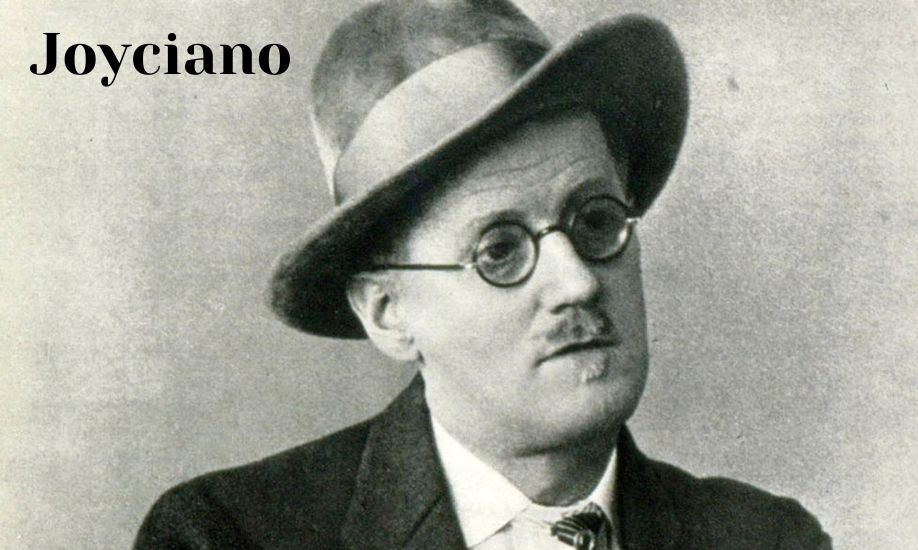Joyciano: Unraveling the Legacy of James Joyce in Italian Literature

“Joyciano” is a term that might be unfamiliar to many, but it holds great significance in literary circles, especially within the context of Italian literature. Derived from the name of the Irish writer James Joyce, “joyciano” refers to anything related to Joyce’s works, his literary influence, and the way his writing has resonated within Italian culture and scholarship. The term has come to embody more than just the study of Joyce’s literature; it represents the cross-cultural exchange between the world of Joyce and the rich tradition of Italian literature.
This article delves into the meaning of “joyciano,” exploring how Joyce’s literary contributions have shaped Italian thought, translation practices, and the broader cultural landscape. Whether in the translation of his works or in the academic discussions that have followed, Joyce’s influence on Italy is undeniable. We will explore the concept of “joyciano” from multiple angles, including its academic, literary, and cultural implications.
The Meaning of “Joyciano” and Its Origins
The term “joyciano” finds its roots in the name of the famed Irish writer James Joyce, who is best known for his works Ulysses and A Portrait of the Artist as a Young Man. Joyce’s writing, particularly in Ulysses, broke new ground in literary form and style, introducing stream-of-consciousness techniques and exploring complex themes of identity, language, and modernism.
In the Italian context, “joyciano” refers not only to Joyce’s works but also to the intellectual and cultural impact of his writing on Italian authors, critics, and scholars. It is a descriptor for anything that is reminiscent of Joyce’s style or thematic preoccupations, including works influenced by his ideas or the way his works have been integrated into Italian literary traditions. The term embodies the intersection of Joyce’s groundbreaking literary techniques with Italy’s own rich cultural and literary heritage.
James Joyce’s Influence on Italian Literature
James Joyce’s impact on Italian literature cannot be overstated. From the 1920s onwards, as Joyce’s works began to gain international recognition, Italian writers, intellectuals, and critics started to engage with his complex narratives and innovative writing techniques. His influence was especially strong in modernist circles, where Joyce’s radical departure from traditional narrative forms inspired many Italian writers to experiment with language, structure, and narrative voice.
Italian authors such as Carlo Emilio Gadda and Italo Svevo, who were contemporaries or near contemporaries of Joyce, absorbed his modernist techniques and made them their own. Gadda’s works, like Quer pasticciaccio brutto de via Merulana, show clear traces of Joyce’s influence in their use of fragmented narratives and complex linguistic play. Similarly, Italo Svevo’s Zeno’s Conscience reflects Joyce’s interest in the psychology of the individual and the nuances of memory.
The term “joyciano” thus becomes a way of identifying the threads of Joyce’s influence woven into the fabric of Italian literary tradition. Whether in direct emulation or in more subtle references, Joyce’s presence in Italian literature is a testament to the power of cross-cultural literary exchange.
The Role of Translation in the “Joyciano” Legacy
One of the most important aspects of the “joyciano” phenomenon in Italy is the process of translation. Joyce’s works, particularly Ulysses, have been translated into Italian several times, with each new translation reflecting different cultural interpretations and understandings of his work. Translating Joyce’s complex prose and experimental narrative techniques has been a monumental task for Italian translators, but it has also led to a deeper engagement with his ideas and themes.
The translation of Ulysses into Italian, for example, required not just a linguistic translation but a cultural one. Joyce’s dense allusions to Irish history, language, and mythology needed to be rendered in a way that would resonate with an Italian audience, while still maintaining the integrity of the original text. Translators like Marcello Pagnini and Luigi Schenoni have contributed significantly to the Italian reception of Joyce, providing readers with a way to access his works through the lens of Italian literary culture.
In this sense, the act of translating Joyce’s works becomes an essential part of what it means to be “joyciano.” It is through translation that the essence of Joyce’s writing has been preserved, reshaped, and integrated into Italian literature, allowing new generations of Italian readers and scholars to connect with his legacy.
Academic Discussions and “Joyciano” Criticism
In addition to translation, Joyce’s influence has been explored through academic criticism, particularly in Italian universities. Scholars have engaged deeply with Joyce’s works, analyzing not only the content but also the form, style, and linguistic experimentation that define his writing. The study of Joyce’s work in Italy has led to the development of a vibrant “joyciano” academic tradition, where scholars explore his literary techniques, the psychological dimensions of his characters, and the philosophical themes embedded in his texts.
Italian academic journals, conferences, and seminars devoted to Joyce’s work have played an important role in fostering a “joyciano” discourse. Critics and literary theorists have examined Joyce’s exploration of identity, consciousness, and the role of the artist in modern society, and how these themes resonate within the context of Italian culture.
Moreover, the critical reception of Joyce in Italy has not been without controversy. Some critics have questioned the relevance of Joyce’s work in the Italian context, while others have embraced it as a necessary step in the evolution of modern Italian literature. These debates form a crucial part of the “joyciano” legacy, as they reflect the ongoing negotiation between Joyce’s original texts and their reception in a new cultural setting.
“Joyciano” in Contemporary Italian Culture
The legacy of “joyciano” continues to shape Italian culture today. From literary festivals to academic symposiums, Joyce’s influence remains strong in Italy. Events like Bloomsday, the annual celebration of Ulysses held in various cities around the world, have found a place in Italy as well. Italian scholars and enthusiasts gather to discuss Joyce’s works, sometimes through creative events such as public readings or translations of passages into local dialects.
The continued presence of Joyce in Italian culture speaks to the enduring relevance of his work. The “joyciano” influence is evident not only in the world of literature but also in the broader cultural conversation. Whether in film, theater, or visual arts, Joyce’s themes of alienation, identity, and self-awareness continue to inspire contemporary Italian artists and intellectuals.
Conclusion: The Enduring Power of “Joyciano”
In conclusion, the term “joyciano” encapsulates more than just a literary influence; it represents a cultural bridge between two distinct literary traditions—Irish and Italian. From the first translations of Joyce’s work into Italian to the ongoing academic discussions surrounding his legacy, “joyciano” embodies the lasting impact of Joyce on Italian thought and creativity. Whether in the classroom, the literary journal, or the cultural festival, the presence of Joyce in Italian society continues to shape and redefine the way Italians engage with literature and the modern world.

